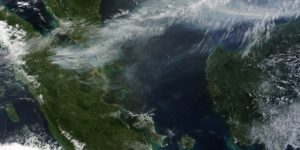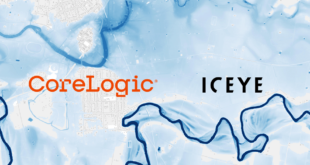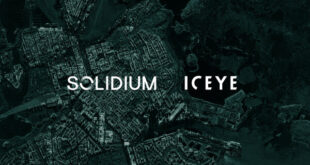
Earth Science Information Partners (ESIP), the global community steward for Earth science data professionals, has announced Operational Readiness Levels (ORLs) to make Earth science data more trusted and to improve data-driven decision-making during disaster response and recovery. The new ORLs empower data professionals and operational decision-makers to turn the massive amount of data available today into vetted information that can be used to inform decisions during evolving disasters and crisis situations.
“Trusted data is crucial to advance the global use of Earth observation data,” said Gilberto Camara, GEO Secretariat Director. “GEO welcome the initiative of ESIP to develop the Earth data Operational Readiness Level framework and their interest to launch it to the global audience at GEO Week 2019.”
The ORLs were presented at GEO Week on Monday, 4 November 2019 from 9:00-10:00am at the Target Side Event titled, “Data for our planet: Increasing the use and value of global information infrastructures to support resilient cities, disaster risk reduction and infectious diseases.”
“One of the most difficult challenges during a disaster is getting trusted data and information into the hands of decision-makers quickly,” said Tom Moran, Executive Director, All Hazards Consortium. “The ORL framework is the first of its kind and is helping operational decision makers and GIS professionals improve the collective understanding of what constitutes reliable GIS data and how to create more reliable data products and dashboards for their information and decision-making needs.”
Operational datasets involve a broad range of data sources and formats, including web GIS data, sensor and real-time data, drone data, crisis management data, social media data, and spreadsheet data. The ORL approach includes identifying the data, continually vetting the data, tagging the data with ORLs within applications, and cataloging the data with tags. These tags are then documented in an organization’s standard operational procedures (SOPs).
“The Group on Earth Observations has expressed that finding ways to make Earth science data reusable and shared for a broader audience is key,” said Erin Robinson, Executive Director of ESIP. “When our ESIP Disaster Lifecycle Cluster identified trusted data as a top obstacle for the Earth observation community, we were in a unique position to lead a community-driven approach to create this framework for operational readiness levels directly with operational sectors.”
The ORL framework was created to translate the operational readiness of a dataset from a research product to easy-to-understand information ready for an operational workflow. Datasets are ranked between 1 and 4, with ORL 1 as the highest level of operational reliability. However, not all data needs to be at an ORL 1 ranking to have value for decision-making. ORL rankings travel with the data as it is passed along to other decision-makers, enabling a broad range of data analysts and decision-makers to immediately understand the reliability of the dataset without having to know the technical details.
“Trusted information empowers data-driven decision making and speeds the time for response and long-term recovery, which prepares communities and saves lives,” said Dave Jones, Co-chair of ESIP Disaster Lifecycle Cluster and CEO, Storm Center Communications Inc., developer of GeoCollaborateO. “We are seeing the ORLs begin to populate operationally within the All Hazards Consortium’s GeoCollaborate Dashboard. This enables users of the dashboard, such as utility companies and emergency managers, to immediately trust the information and move on to decision making.”
“Here at Duke Energy, we are testing Operational Readiness Levels so we can have a faster pathway to trusting data for rapid decision-making during storm response,” said Kari Hicks, Senior GIS Analyst, Duke Energy. “The power of the ORL model is immediate recognition of the reliability of the data as well as knowing short comings of the data. This knowledge will result in better data-driven decisions and incentivize data providers to deliver better data.”
The ORLs will be used to vet data for Electric Sector Emergency Response, Electric Sector and Emergency Management Damage Assessment, and Emergency Support Functions (ESF) for emergency management personnel at state and federal levels. Private sector corporations in communications, transportation, energy, food, agriculture, fuel and medical supply sectors can also use the ORLs.
“We are pleased with the early adoption of the ORLs by the All Hazards Consortium, the utility industry and emergency managers, which has placed federal agencies such as DHS and FEMA in the pipeline to adopt,” said Robinson. “The initial focus for the ORLs is to support decision makers during evolving disasters, but we believe this framework can be applied more broadly. There is an ongoing effort to refine the criteria for specific operational use cases and mature the ORL framework for different scenarios and applications. We look forward to sharing ORLs during GEO Week 19 and hope that the GEO Community will also consider broader adoption across other projects.”
 SpaceWatch.Global An independent perspective on space
SpaceWatch.Global An independent perspective on space




